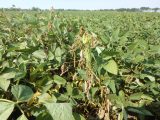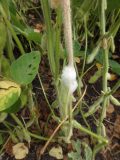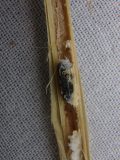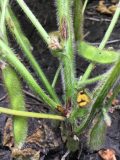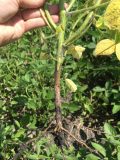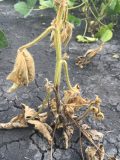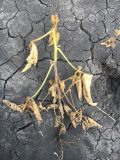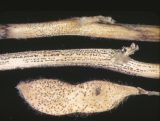Stem and root diseases can have a greater impact on soybean yield and quality than foliar diseases. Stem disease symptoms typically arrive later in the growing season during mid- to late- reproductive stages, which can directly impact pod and seed production. The most prevalent and economically important diseases in this category are white mould (Sclerotinia) and phytophthora root rot.
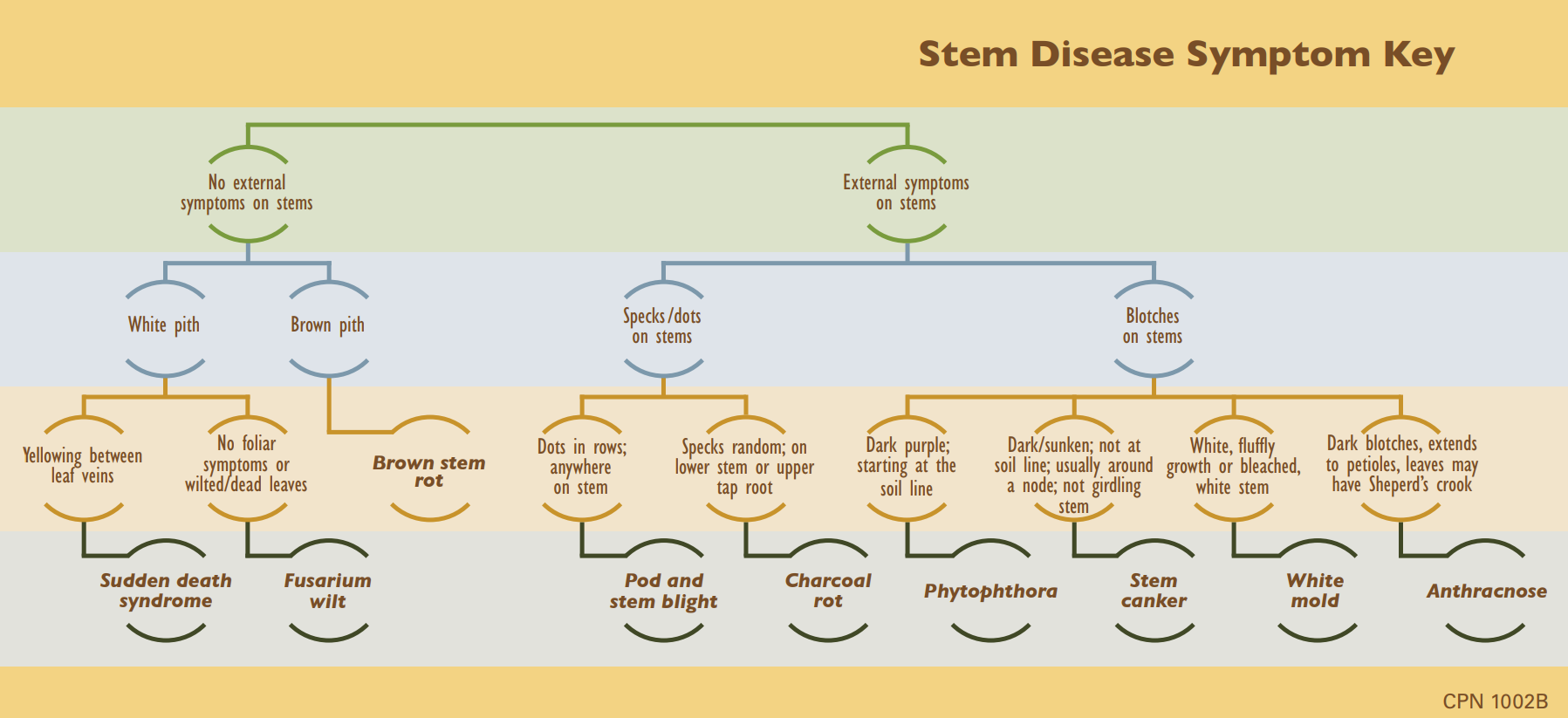
White Mould
White mould can cause 2-5 bu/ac of yield loss for every 10% increase in incidence (% of plants affected). Cool, wet conditions throughout July and August and a dense crop canopy favour disease development. Infection begins low in the canopy at nodes along the stem.
Symptoms may first be noticed from afar as lodged plants or wilted, drying leaves at the top of the canopy. Inside the canopy, symptoms may appear as white mycelium (mouldy growth) along the stem, with black sclerotia bodies inside the stem.
Phytophthora Root Rot (Phytopthora sojae)
Phytophthora root rot (PRR) is considered both a root and stem disease. Late-season infection of PRR appears as a chocolate-brown lesion on the stem that extends upward from the soil line. In some cases, this lesion may develop up one side of the plant only. Dig up roots to confirm. If roots appear rotten (e.g., root mass is reduced and discoloured, nodulation is minimal), it is likely PRR. If a stem lesion is present and roots appear healthy, it may be another stem disease like northern stem canker or pod/stem blight.
Internal stem will also have brown discolouration and plants will pull easily from the soil. Other symptoms may include include stunting, yellowing plant tissue and wilted leaves remaining attached to the plant. Infected plants may occur in patches or at random among healthy plants. This disease can affect plants at all stages, but it is easier to identify at reproductive stages. Foliar fungicide will not salvage infected plant tissue.
In 2019, only 5% of fields surveyed (4/83) tested positive for PRR in Manitoba. In 2018 and 2017, PRR was confirmed in 29% (28/96) and 35% (31/89) of fields surveyed, respectively.
Northern Stem Canker (Diaporthe caulivora, D. aspalathi)
Initial symptoms typically appear on the lower third of the stem shortly after flowering. The disease begins as small, reddish-brown lesions at the base of a branch or leaf petiole. These lesions then expand to form slightly sunken cankers that are reddish-brown with reddish margins. Cankers may span several nodes on the main stem. Stem canker may at first resemble Phytophthora root and stem rot, where lesions wrap around the stem and extend to the soil line. However, plant roots will appear healthier than those infected by Phytophthora.
Stem canker is found each year in Manitoba, but its incidence is currently low. Keep an eye on this disease’s progression over time.
Pod and Stem Blight (Diaporthe phaseolorum var. sojae)
Pod and stem blight is present in Manitoba, but at low levels. It is identified by distinct lines of raised, black dots (pycnidia) on infected stems, pods and petioles.
Seed infection (Phomopsis seed decay) only occurs if pods are affected, which can reduce seed quality. Symptoms may be easier to detect in August through September when soybean plants are maturing.
Anthracnose (Colletotrichum truncatum)
Anthracnose is less common in Manitoba-grown soybeans. It appears as reddish-brown irregularly-shaped blotches on the leaves, stems and petioles. Black fungal bodies develop in these blotches later in the season. Leaf symptoms include reddish veins. Leaf petioles may also become twisted and bent into a Shepherd’s crook, resulting in early defoliation.
Sudden Death Syndrome (Fusarium virguliforme)
Sudden death syndrome (SDS) infects roots early in the growing season, but foliar symptoms usually appear after flowering. Interveinal leaf chlorosis becomes necrotic, then leaves eventually die and prematurely fall from the plant leaving the petiole attached. Fields infested with SCN can increase the severity of SDS symptoms.
New Potential Threats
These diseases have not yet been confirmed in Manitoba. However, early detection and preventative management can slow the spread of these pests. If you suspect one of these diseases in your crop, geo-reference the location and contact MPSG Production Specialists Cassandra Tkachuk (eastern Manitoba) or Laura Schmidt (western Manitoba). Laboratory confirmation is needed to confirm the presence of these pathogens.
Charcoal Rot (Macrophomina phaseolina)
Charcoal rot appears as a light-grey or silver-coloured lower stem and taproot. When stems are split, black streaks will be present in the woody portion of the stem. This disease also produces tiny, black fungal structures (microsclerotia) throughout affected areas of the plant, giving the tissue a charcoal-like appearance.
Brown Stem Rot (Phialaphora gregata)
The internal stem tissue located at the nodes will have a reddish-brown discolouration. The stem exterior often appears healthy but may have an olive-green, shiny appearance. Leaf symptoms of brown stem rot resemble those of sudden death syndrome – interveinal chlorosis and necrosis of the youngest leaves. Unlike sudden death syndrome, you will not see the characteristic symptoms of root rot if plants are infected by brown stem rot.
For more information and images of all diseases listed here, check out the Crop Protection Network Scouting for Stem Diseases publication. More information on these diseases can also be found on the Crop Protection Network publication database.

